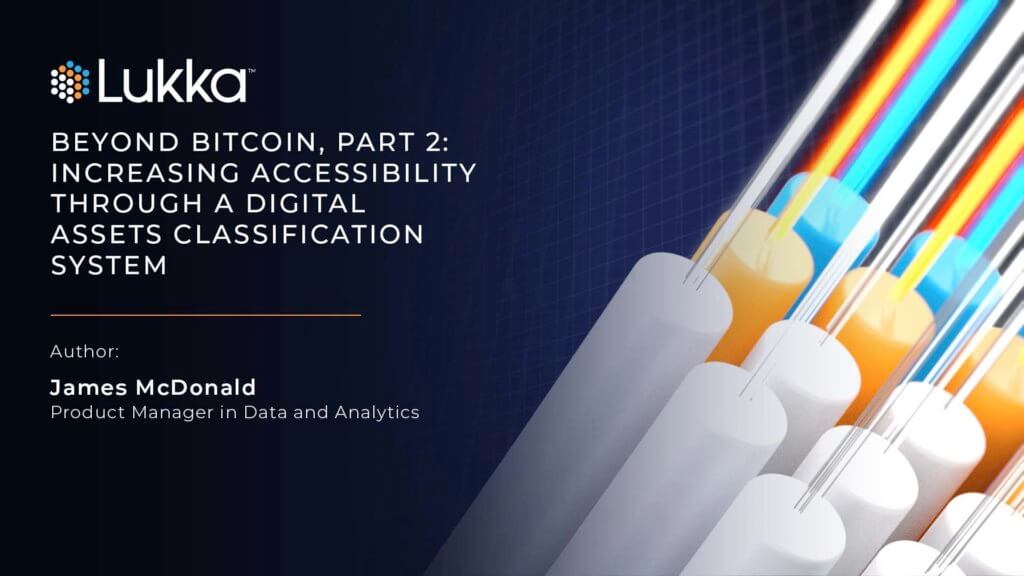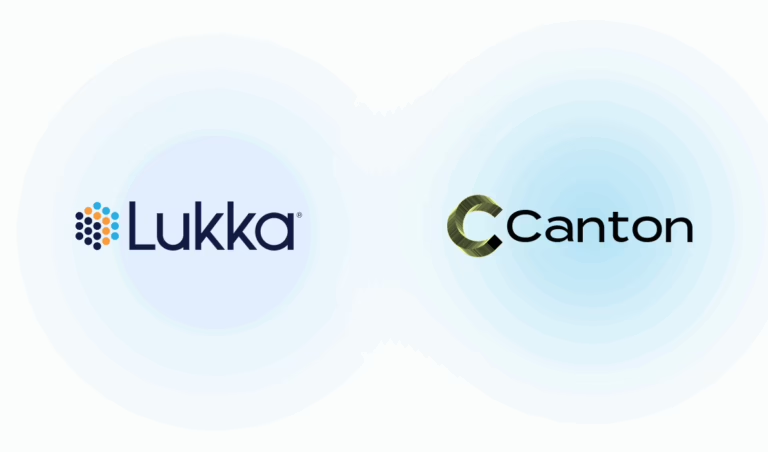Author: James McDonald, Product Manager in Data and Analytics
In part one of the Beyond Bitcoin series, we introduced the importance of applying a sector classification system to the emerging Digital Assets asset class. We examined what it looks like for an investor to expand their view of the digital assets market beyond the oft-cited Megacap assets (such as Bitcoin and Ethereum) and discussed how a sector classification would benefit portfolio managers making active investment decisions.
This part of the series explores how this will increase access for market participants through the transparency, clarity, and stability that comes from applying a sector classification.
Benefits of Adopting a Standardized Sector Classification
The broad adoption of a digital assets sector classification system has the capability to provide benefits to market participants, supplement the growth of digital assets, and enable new investors to participate in the market. Notable benefits include:
Adding Efficiency to the Portfolio Management Process
Asset sector categorization allows investors to overlay traditional portfolio management methods within the portfolio construction process. For example, investors could compare risk and return metrics across different sectors as well as examine historical returns to see how specific assets have performed compared to their sector. Going further, investors could study the correlation of returns across sectors with the goal of reducing idiosyncratic risk within a portfolio.
These types of analyses which are common in mature markets, support the overall portfolio construction process. However, the adoption of similar practices within the digital assets space has yet to come to fruition in the same way it is used in public equities markets, largely due to barriers in classifying digital assets in a standard and consistent way.
How It Could Work
A hypothetical investor may compare the 12-month historical performance and standard deviation of returns for assets within the Smart Contract Platforms and Scaling sectors. They see that the Smart Contract Platforms sector outperformed the Scaling sector in the last 12 months while maintaining a comparable level of risk. This information, plus a manager-driven macro-level view of the fundamentals within the digital assets market, could inform an investment thesis for overweighting or underweighting an allocation to the scaling sector.
Creation of New Investment Products
As the Digital Assets asset class grows and matures, the demand for new products and tailored exposures from market participants continues to increase. Using a sector classification system to build investment products that help formulate tailored exposures in the digital assets market will benefit issuers, investors, and the overall market structure. As regulatory clarity unfolds, investors may see the introduction of products that enable quick exposure to specific corners of the digital assets market.
How It Could Work
Similar to how investors are able to gain exposure to certain sectors via sector-specific ETFs in the stock market today, they may demand similar tailored exposure to digital assets. Investors may choose from an array of products that provide exposure to a specific sector, such as Metaverse ecosystems, Play to Earn tokens, or DeFi platforms, allowing investors to create more diverse and efficient portfolios.
Enable Index Construction to assist in Benchmarking:
Adoption of a standardized sector classification system will lead to new digital asset-specific indices. Indices that can offer greater transparency to market participants within the digital assets space as well as provide a standardized point of comparison for benchmarking. Sage index providers recognized this is a critical requirement to advance market maturity.
A great example of this is the S&P Dow Jones suite of digital asset indices dedicated to helping investors track exposure to different areas of the market. Indices help investors benchmark asset or portfolio performance, compare professional investment managers, and set trackable risk and return goals.
How It Could Work
Self-directed investors could opt to invest in digital assets and gauge their performance against an index that tracks the broader market, such as the S&P Cryptocurrency Broad Digital Market Index (SPCBDM). From another side of the market, a Fund of Funds Manager may look to construct a portfolio of active digital asset hedge funds primarily based on previous performance against the same SPCBDM index benchmark.
Investor Portfolio Governance and Guideline Supervision
The application of a standardized classification system allows for tailored and rigorous controls in portfolio mandate documentation and subsequent portfolio monitoring. In addition, classification empowers professional money managers and clients to specify more granular controls for investment managers within traditional agreements, such as an Investment Policy Statement or Financial Plan.
How It Could Work
The client and money manager could agree that no more than 2% of the portfolio value can be allocated to DeFi strategies, and only 5% can be allocated to the Digital Assets asset class. These rules could be crucial for new investors who are hesitant to enter the market due to risk or volatility concerns. The correct implementation of such guidelines will enable a risk-focused approach to entering the market and promote broader adoption.
The underlying theme in all of the above benefits is they make digital assets more accessible for investors. A classification system removes significant barriers to entry for new investors and makes the asset class more digestible at all levels of market participation. Bypassing crypto-jargon and viewing the market via a standardized digital assets sector classification system helps investors understand their investment and increases transparency, stability, and participation.
About Lukka
Lukka is a firm that helps solve some of the greatest financial challenges in crypto and has the intellectual resources, along with the data and processing capabilities, to test hypothetical scenarios like the one here. For more information on how Lukka puts data to work across multiple finance sectors, traditional and decentralized, supporting industries from insurance to Formula E, go to our website at Lukka.tech
DISCLAIMER
THE INFORMATION CONTAINED IN THIS BULLETIN PROVIDES ONLY A GENERAL OVERVIEW OF CURRENT ISSUES RELATED TO DEBT FINANCING IN CRYPTOCURRENCY MARKETS AND SHALL IN NO EVENT BE CONSTRUED AS THE RENDERING BY LUKKA OF PROFESSIONAL ADVICE OR SERVICES. AS SUCH, THE INFORMATION PROVIDED IN THIS BULLETIN SHOULD NOT BE USED BY YOU AS A SUBSTITUTE FOR CONSULTATION WITH PROFESSIONAL ADVISORS. BEFORE MAKING ANY DECISION OR TAKING ANY ACTION REGARDING YOUR DIGITAL CURRENCIES OR THE DEBT TREATMENT THEREOF, YOU SHOULD ALWAYS CONSULT WITH AN APPROPRIATE FINANCIAL, LICENSED TAX, ACCOUNTING, OR OTHER PROFESSIONAL. TO THE FULLEST EXTENT PERMITTED BY LAW, IN NO EVENT WILL LUKKA(INCLUDING ITS RELATED ENTITIES, OWNERS, AGENTS, DIRECTORS, OFFICERS, ADVISORS, OR EMPLOYEES) BE LIABLE TO ANY READER OF THIS BULLETIN OR ANYONE ELSE FOR ANY DIRECT, INDIRECT, OR CONSEQUENTIAL LOSS OR LOSS OF PROFIT ARISING FROM THE USE OF THIS BULLETIN, ITS CONTENTS, ITS OMISSIONS, RELIANCE ON THE INFORMATION CONTAINED WITHIN IT, OR ON OPINIONS COMMUNICATED IN RELATION THERETO OR OTHERWISE ARISING IN CONNECTION THEREWITH.



